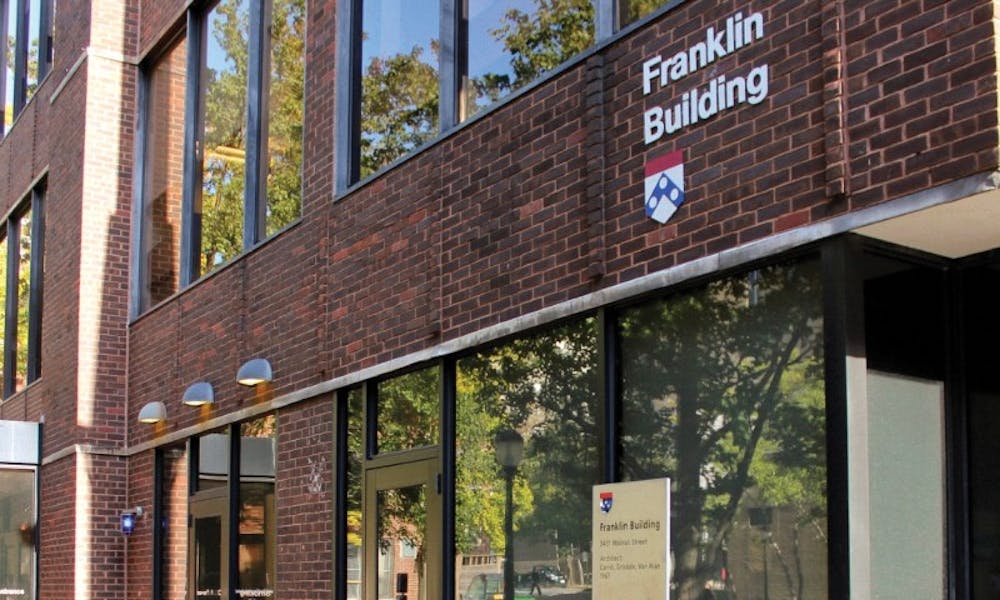
File Photo
Penn identifies certain "high-need" students every year to ensure that they have adequate meal options over breaks like Thanksgiving, though some have indicated that the way these "high-need" students are identified remains unclear.
The result is that while some low-income students are actively invited to participate in these targeted programs, others are left entirely in the dark about what they are.
Student Registration and Financial Services and Penn Dining have provided students with free meals at Gourmet Grocer in the days before Thanksgiving break for the past two years.
This past Thanksgiving, SRFS contacted almost 900 students they identified as “high-need” to offer them extended meal options over the break, according to Pam Lampitt, Director of Hospitality Services. Of the 900 students, 105 participated in the program, which was made possible when Penn’s chapter of Swipe Out Hunger allowed students to donate their unused meal swipes to students in need.
"You do not need to have a dining plan to participate, and if you do have a dining plan, no swipes or Dining Dollars will be charged for these meals," University Director of Financial Aid Elaine Papas Varas wrote in an email sent out to the students in "high need." "Meals will be provided at no cost to you via donated swipes from the Swipe Out Hunger campaign."

But some low-income students say SRFS' definition of "high-need" is not always comprehensive, causing some students who need the program to be excluded from it. In fact, because the email from Varas was only sent out to the students that the University identified as "high need," some students who needed the program were not aware that the program even existed.
“It’s almost impossible for those students to get food [from the program] unless they heard from a friend that this is something that is offered,” said College junior Lyndsi Burcham, who is the secretary for Penn First — a student organization for first-generation, low-income students.
This was the case for College freshman Cassandra Jobman, who is a Daily Pennsylvanian Opinion cartoonist.
Jobman, who is a member of PennCAP, Penn First, and the QuestBridge program, said she did not receive SRFS’ initial email but instead heard about it from other low-income students in PennCAP. She then reached out to Penn First Secretary and College junior Lyndsi Burcham about why she was not included.
Burcham told her she learned at a SFS Advisory Board meeting in March this year that the University identifies high-need students as students whose family contribution is below $4,500. According to the FAFSA website, "family contribution" is a "measure of a family’s financial strength." Taken into account in this calculation is the family's income and assets as well as the family size and education level.
Jobman said she was surprised to learn about Penn's criteria for high-need students, because her family contribution is lower than $4,500
“I appreciate the moves their making towards better accommodating for low-income students that aren't going home. But I'm still really confused on where they decide who gets to take a part in that," she said.
Varas said a high-need student is identified by more than their family contribution alone. She said SRFS uses a student’s FAFSA and College Board student profile to analyze their expected family contribution and assess their assets and investments.
“The long answer is there’s a lot of calculations that go into the determination, which really eliminates us being able to have a specific threshold,” said Varas.
“I would never want to say to a family 'if you fall within this category of an income, that you are now going to be eligible for this amount of a loan.'” said Varas. “Because there may be a whole lot of other characteristics that are involved.”
She added that assessing these characteristics is necessary because a family with a low income could have assets such as a business or multiple properties.
“That family could potentially be in the millionaire category,” said Varas.
But for students who do not fall under this exception, the definition of a high-need student remains confusing.
“It’s not like I have a secret pocket of cash that I’m just like being stingy about that’s like 'oh I have money from my parents I just don’t want to spend it over break,'" Jobman said. "I wish I could genuinely say that I could eat over break [even] if I didn’t have these benefits.”
The Daily Pennsylvanian is an independent, student-run newspaper. Please consider making a donation to support the coverage that shapes the University. Your generosity ensures a future of strong journalism at Penn.
Donate







